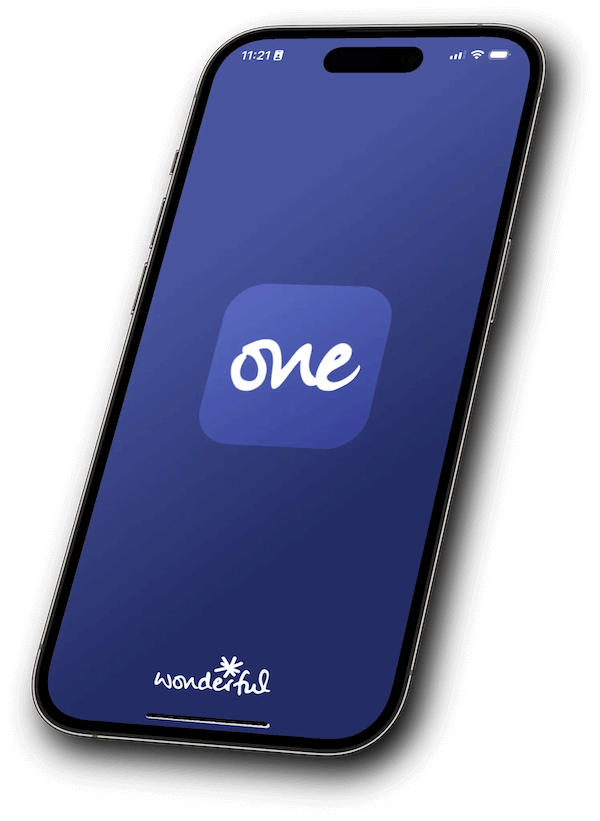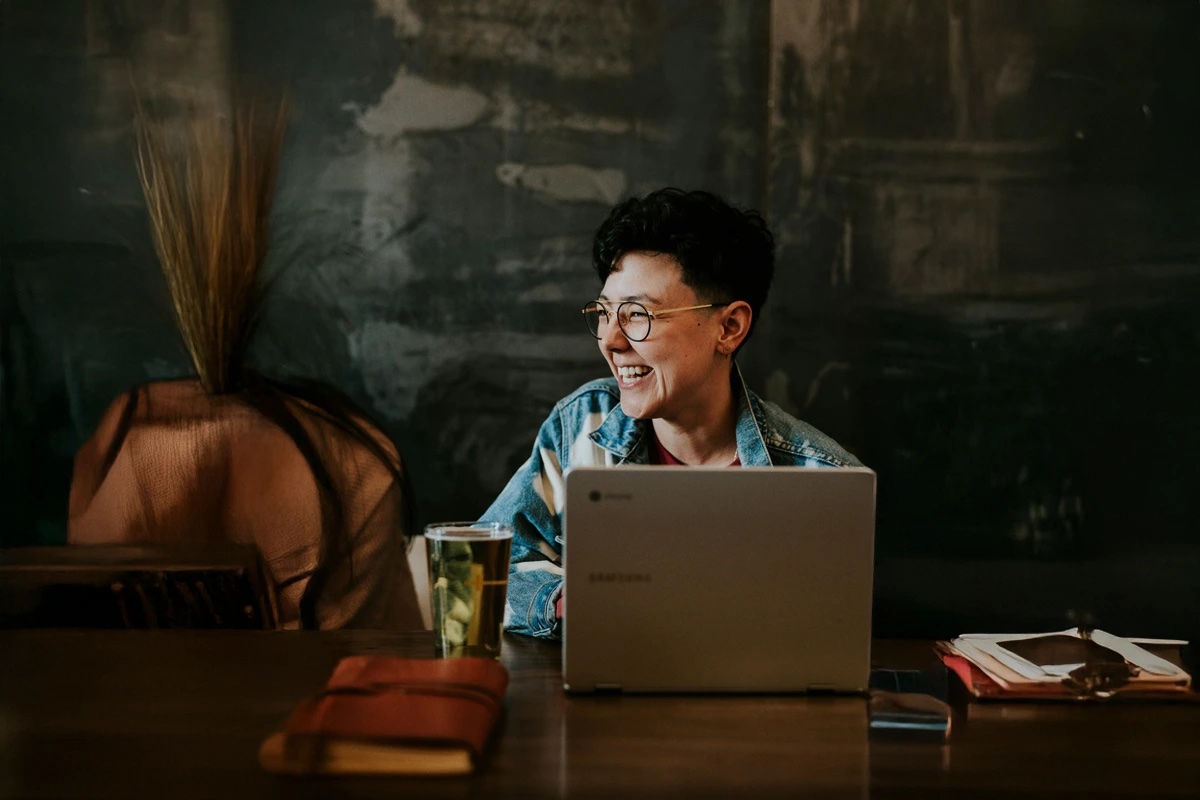UK retail trends 2025: Innovations reshaping the high street and beyond
![]() Kieron James
-
Kieron James
-
In 2025, UK retail is buzzing with change. A time where simplicity and people-first values are as important as the latest tech. Blended online and in-store shopping is rising, our beloved high streets are facing challenges and making payments easy and fair is more crucial than ever.
The retail world is changing, and fast. While shiny new tech and online shops are grabbing headlines, we can't forget the human touch. Shoppers today want things to be easy, yes, but they also want to feel good about their choices. They care about the planet, they want to know where their products come from, and they want to feel a connection to the brands they love.
This transformation reflects a broader shift in consumer attitudes, expectations, and behaviours, extending beyond technological advancements alone. Today’s shoppers demand convenience without sacrificing enjoyment, sustainability without compromising on choice, and personalisation without feeling intruded upon. For online retailers, meeting these seemingly contradictory demands requires a mix of creativity and strategic investment in the right tools and processes.
In this evolving landscape, payment technology has emerged as a key differentiator. Innovative retail POS systems, mobile wallets, and integrated payment solutions are being embraced to streamline operations and enhance customer experiences. As we explore throughout this article, these technologies are doing more than facilitating transactions, they are reshaping the very nature of how retailers engage with their customers.
Reimagining retail: Making shopping an experience
Retailtainment: Beyond shopping, It’s about entertainment
Shopping is becoming less about just buying stuff and more about having an experience. Think interactive stores, fun social media shopping, and brands that really get what their customers want.
Forward-thinking retailers are incorporating features such as smart mirrors for virtual try-ons, AI-powered assistants offering personalised recommendations, and gamified shopping experiences. These are strategic investments in the modern retail space, aimed at increasing in-store dwell time and driving foot traffic.
Luxury brands are creating these amazing in-store experiences, and we love seeing it! But we also believe that every retailer, big or small, should be able to offer a great experience. That’s why we’ve made our payment solutions so easy to use, so you can spend less time worrying about transactions and more time making your customers smile.
Social commerce in the UK: Where shopping meets community
Everyone's on their phones, right? So it makes sense that shopping is happening there too! Social media is now a place where you can discover new things and buy them right then and there. It's all about that instant connection.
Platforms such as Facebook, Instagram, YouTube, and TikTok have evolved from discovery tools into fully-fledged retail channels. The path from inspiration to purchase is now seamless; consumers can buy products without ever leaving the apps they’re already using. This frictionless experience is especially appealing to younger audiences for whom content consumption and shopping have always been intertwined.
For Gen Z, social commerce is a natural extension of the shopping journey. This demographic places a high value on authenticity and peer recommendations, often trusting influencer reviews over traditional advertising. Livestream shopping, in particular, has gained traction, offering a compelling mix of entertainment, real-time interaction, and urgency.
The statistics are telling: social commerce penetration in the UK is projected to reach 30.78% by the end of 2025, with growth expected to continue to 31.41% by 2028. For retailers, this presents both a significant opportunity and a strategic imperative, to blend social commerce with traditional eCommerce methods, creating engaging, shoppable content that cuts through the noise and drives conversions in an increasingly competitive digital space.
Greener retail: Shopping with a conscience
The rise of the conscious UK consumer
People care about the planet, and they're choosing brands that do too. Sustainability isn't just a trend; it's a way of life. Shoppers want to know that their purchases are making a positive impact.
Sustainability has evolved from a marketing buzzword into a fundamental business necessity. With nearly 46% of global consumers favouring more sustainable products, today’s shoppers are more environmentally aware than ever. Many are even willing to pay a premium, up to 9.7% more, for goods that align with their values around ethical production and sustainability.
This shift in consumer expectations is compelling retailers to reassess their entire supply chains, from sourcing and manufacturing to packaging and end-of-life product management. Brands such as ASOS, for example, have introduced initiatives like their Circular Design Collection, which uses 98% recyclable or regenerative materials. Clear, honest communication around sustainability efforts is now essential to engage and retain this growing segment of conscious consumers.
Circular economy in retail: What store owners need to know
Beyond individual sustainable products, the circular economy, centred on designing items for longevity, reuse, and recycling, has gained significant momentum. For progressive retailers, rental services, repair programmes, and resale platforms are no longer niche ventures but strategic priorities.
Brands such as Ikea, Levi’s, and Zara have all launched in-house resale schemes, enabling customers to buy and sell second-hand items. This not only appeals to environmentally conscious audiences but also opens new revenue streams and extends brand engagement beyond the initial purchase.
The shift away from "haul culture", marked by impulsive, excessive buying showcased on social media, towards more mindful consumption underscores this broader sustainability movement. Retailers are now investing in accurate sizing guides, AR fitting tools, and consumer education on the environmental impact of returns, while emphasising quality over quantity in their messaging.
Digital product passports: Bringing transparency to the aisle
Digital Product Passports (DPPs) are emerging as a vital tool in the shift towards more sustainable and informed consumer behaviour. Accessible via QR codes or similar identifiers, DPPs provide comprehensive data on a product’s origin, materials, recyclability, and care instructions, empowering customers to make better-informed choices.
While upcoming EU regulations may soon mandate these systems, forward-thinking UK retailers are already adopting them voluntarily. By embracing this technology, these businesses are not only differentiating themselves in a competitive market but also building trust with increasingly sceptical consumers through a level of transparency that was previously unattainable.
Sustainability isn’t just for retail. Discover how ethical health and wellness are driving change in the UK's organic sector.
Omnichannel 2.0: Seamless shopping, anytime, anywhere
Mapping the modern omnichannel customer journey
Shopping should be easy, no matter where you are or what device you’re using. Whether you’re browsing on your phone or popping into a store, you want things to be smooth and consistent.
Retailers leading the way are grounding their approach in a modern omnichannel marketing strategy, ensuring customers experience consistent engagement across physical stores, apps, social channels, and marketplaces.
And when it comes to paying, you want options. Some people love digital wallets, others prefer cards. That’s why we offer flexible payment solutions that fit everyone’s needs. With Wonderful’s One App, retailers can offer those simple QR code payments in-store or send secure payment links online, all for a fair monthly price.
Smart payments: Powering fast, frictionless checkouts
Successful omnichannel integration hinges on payment flexibility. Around 17% of consumers worldwide abandon their purchase if their preferred payment method is unavailable, making diverse payment options crucial for conversion.
Digital wallets are steadily gaining traction, with projections indicating that by 2026, 60% of the global population will use them. However, payment preferences vary regionally: 70% of consumers in the Asia-Pacific region prefer e-wallets, while debit and credit cards remain dominant in North America, Latin America, Europe, and the MENA region.
This variety in payment preferences has sparked innovations in payment solutions. In particular, Open Banking payments are becoming popular in the UK. Solutions like the One App by Wonderful allow businesses to collect fast bank payments via QR codes for in-store purchases and secure payment links for online transactions. Wonderful’s model also ensures quick settlements and enhances payment security by eliminating traditional card fees, which can erode merchant margins, all for just £9.99 per month for up to 1,000 transactions. This approach addresses three key challenges for retailers: cost predictability, cash flow management, and fraud reduction. The app’s comprehensive dashboard and simple design equip retailers with the insights needed to optimise their payment strategies.
Payment systems for growing retailers: Scalable and secure
The democratisation of payment technology has significantly levelled the playing field for small and medium-sized businesses (SMBs) in the UK. Once the preserve of large enterprises with substantial technical budgets, advanced payment systems are now accessible to independent retailers, pop-up shops, and growing chains alike.
Mobile POS systems such as Square, SumUp, and Wonderful provide flexible and easy-to-deploy options for physical retail environments.
• Square excels in offering an all-in-one solution with intuitive hardware, robust analytics, and a built-in ecosystem that suits cafés, boutiques, and market stalls.
• SumUp stands out for its simplicity, low transaction fees, and ultra-portable card readers, ideal for mobile sellers and service-based retailers.
• Wonderful, is revolutionising payments in the UK by offering a low-cost, high-efficiency alternative to traditional card-based systems. Their solutions, powered by open banking, include a softPOS app, a payments API, and a WooCommerce payment plugin, which enable instant payments with near-instant settlements. With zero-percentage fees and transaction charges of just 1p per payment, Wonderful is a standout choice for small retailers looking to avoid costly card processing fees and minimise upfront investment in payment hardware. It's particularly well-suited to businesses seeking streamlined, card-free solutions without compromising on speed or reliability.
On the other hand, integrated payment solutions like Stripe are better suited for retailers with hybrid or online-first business models.
• Stripe’s strength lies in its developer-friendly APIs, seamless e-commerce integration, and support for subscription billing, making it a go-to for D2C brands, online stores, and omnichannel retailers who need customisation and the ability to scale.
These online payment systems don’t just facilitate transactions; they help retailers integrate payments with inventory management, CRM systems, loyalty schemes, and reporting tools. This integration empowers smaller retailers to match the speed, personalisation, and efficiency of larger competitors.
Choosing the right payment provider for your retail business
The best payment system for your retail operation depends on your business model and growth goals.
• Running a physical shop or market stall? SumUp, Square and Wonderful offer fast setup and user-friendly POS tools.
• Selling online or across multiple channels? Stripe provides powerful APIs and scalable payment infrastructure.
• Focused on values or working in the third sector? Wonderful is an ethical option for socially-minded enterprises.
Ultimately, the right solution should strike the right balance between cost, ease of use, integration, and customer experience, enabling your retail business to scale securely and confidently.
The resale revolution: Giving products a second life
Luxury resale goes mainstream
Buying pre-loved items is becoming super popular. It’s good for the planet, and it’s often easier on the wallet. Even luxury brands are getting in on the action!
We love the idea of giving things a second life. It’s all about making smart choices and being mindful of what we buy. And we’re here to make sure that those resale transactions are just as smooth and secure as buying something new.
Luxury fashion is one of the sectors most impacted by the resale movement. Driven by increased environmental awareness and greater price sensitivity, luxury resale has moved firmly into the mainstream, once the domain of exclusive auction houses and specialist consignment boutiques.
Initially viewing resale as a threat to their exclusivity, many high-end brands now recognise it as an opportunity: a way to engage younger audiences, extend product lifecycles, and demonstrate a commitment to sustainability. Through blockchain-based authenticity verification and brand-owned resale platforms, many luxury houses are exploring rental and subscription-based models to expand their reach.
As circular fashion evolves from trend to societal expectation, this approach enables luxury brands to attract a broader customer base without diluting brand equity. For consumers, brand-backed resale platforms offer the reassurance of authenticity alongside the satisfaction of making a more environmentally responsible purchase.
Resale-only marketplaces: What retailers can learn
In addition to brand-led initiatives, dedicated resale platforms like Vinted and Depop have grown into major retail forces in their own right. These marketplaces foster communities centred around pre-owned fashion, blending social interaction with commerce, something that strongly resonates with younger consumers.
Their success highlights a deeper shift in attitudes toward ownership. The idea of transitory ownership, buying with the intention to resell, is becoming increasingly normal, particularly among Gen Z and millennials. Quality and resale potential are becoming key considerations, reframing fashion as both a personal expression and a form of investment.
Blended retail: Combining new and pre-owned inventory
Traditional retailers are also adapting, incorporating second-hand stock alongside new items in-store and online. This hybrid approach not only meets the demand from environmentally conscious shoppers but also allows businesses to tap into both primary and secondary revenue streams.
Combining new and pre-owned inventory marks a significant shift in retail strategy. It reflects the reality that modern purchasing decisions are based on a complex matrix of factors, price, sustainability, uniqueness, and instant availability. By offering both types of products in a single retail environment, brands can better cater to evolving consumer expectations and behaviours.
Reviving the high street: Strategies that work
Why UK high streets are struggling (and who’s succeeding)
Our high streets are facing some tough times. But we believe they’re worth fighting for. They’re the heart of our communities, and they’re full of unique shops and stories.
We’re seeing retailers get creative with smaller stores and shared spaces, and we’re helping by providing affordable payment solutions that are easy to use. With Wonderful’s One App, retailers can avoid those hefty card fees and keep more of their hard-earned money.
Despite ongoing innovation within the retail sector, the UK high street continues to face significant challenges. According to the Centre for Retail Research, approximately 17,350 retail stores are expected to close in 2025—a stark indicator of the rapid decline in physical retail presence.
Recent closures reflect this trend: River Island will shut its Chesterfield store in Vicar Lane Shopping Centre on 19 April 2025, following the earlier closure of its Corby location in Willow Place. Both closures have been marked by in-store discounting of up to 30%, signalling end-of-line clearance strategies increasingly common across the sector.
Retail pressure points: What’s really driving closures
These closures are not isolated events but the result of multiple compounding pressures facing brick-and-mortar retail.
One of the most pressing issues is the rising cost of doing business. The British Retail Consortium estimates that increased employer National Insurance Contributions from April 2025 will cost the UK retail sector an additional £2.3 billion. At the same time, the National Living Wage is rising to £12.21 per hour, with younger workers aged 18–20 receiving £10 per hour, a significant £1.40 increase.
Footfall on high streets continues to decline as consumers increasingly prefer online shopping. In-store sales are falling, and many locations are becoming financially unviable, particularly as local councils raise town centre parking fees, pushing consumers toward retail parks that offer free parking and a broader mix of outlets.
The collapse of major retail chains has also left a lasting impact. Brands such as Debenhams, Wilko, Dorothy Perkins, Topshop, and Carpetright have either entered administration or transitioned fully to online-only models. These closures often result in private equity acquisitions, where the brand and intellectual property are retained but physical stores are rarely revived, apart from a limited number of flagship or pop-up outlets.
Winning tactics: How retailers are fighting back
In response to these challenges, many retailers are embracing new strategies to maintain a high street presence while controlling costs.
Some are trialling ‘small format’ stores, compact locations showcasing a curated selection of products, with integrated digital tools guiding customers to the full range online. This model helps brands retain visibility in key areas while reducing the overheads associated with larger premises.
Others are turning to shared retail spaces, where multiple businesses co-locate and share operating costs. This collaborative model minimises financial pressure while fostering destination-style environments that encourage visits and spontaneous purchases.
Technology is also playing a key role in high street resilience. Innovative payment solutions such as QR code-based purchases reduce friction at checkout and lower transaction costs. For example, Wonderful’s One App offers predictable monthly pricing of £9.99 for up to 1,000 transactions, avoiding per-transaction card fees that can significantly erode profit margins, especially for lower-value items.
For a deeper look into the hidden challenges facing UK high street retailers and how they can adapt, read our latest analysis.
As discussed in The River Island crisis, traditional high street retailers can avoid decline by integrating digital sales channels and modernising customer experiences, not just to compete, but to survive in today’s evolving landscape.
Smart retail: AI-powered personalisation
AI for product discovery: From recommendations to emotional AI
Technology is helping retailers know their customers better. Think personalised recommendations and chatbots that are actually helpful. It’s all about making shopping feel tailored to your customers.
We’re excited about the possibilities of AI, but we also believe in the power of human connection. That’s why we’ve designed our payment solutions to be simple and intuitive, so retailers can spend more time connecting with their customers.
In digital retail environments, this “emotional intelligence through data” is transforming how trust and loyalty are built. By understanding not only what customers buy, but why they buy, retailers can create experiences that feel intuitive and personal, rather than algorithmic and transactional.
Retail AI in operations: Inventory, insights and efficiency
Beyond customer-facing applications, artificial intelligence and machine learning are reshaping the operational backbone of retail. Machine learning algorithms are improving demand forecasting, minimising waste and stockouts, and streamlining supply chain logistics. Retailers implementing these technologies are experiencing higher conversion rates and improved profitability, demonstrating the tangible business value of digital intelligence.
With more retailers adopting AI-driven personalisation, modern email marketing platforms play a crucial role by automating tailored product recommendations and timing messages based on real-time customer intent.
Chatbots and virtual assistants, once considered a novelty, have now become essential tools for reducing operational costs and delivering real-time customer support, 24/7. As these systems become more sophisticated, they’re increasingly handling complex enquiries that previously required human involvement, freeing up staff to focus on high-value interactions.
See how AI is revolutionising shopping across sectors. Explore 2025 e-commerce trends for UK businesses.
Looking ahead: The future of UK retail (2025 and beyond)
The UK retail industry continues to evolve at an unprecedented pace as we progress through 2025. The most successful retailers will be those able to balance innovation with pragmatism, digital transformation with human connection, and commercial goals with social responsibility.
In particular, payment technologies are playing a pivotal role in this transformation. Solutions such as Wonderful’s Pay by Link feature represent the future of retail payments, simple, affordable, secure, and aligned with broader societal values. By eliminating transaction fees, ensuring instant settlements, and supporting charitable giving, platforms like these offer a compelling alternative to traditional payment systems.
Navigating this complex landscape will require both strategic foresight and operational agility. UK retailers can not only survive but thrive by embracing experiential retail and social commerce, committing to sustainability and circular economy principles, delivering seamless omnichannel experiences, engaging with the growing resale market, innovatively responding to high street challenges, and leveraging artificial intelligence for hyper-personalisation.
Retailers must also recognise that today's innovations, from QR code payments to digital product passports, from social commerce to AI-powered personalisation, are not merely technological upgrades. They are direct responses to fundamental shifts in consumer values and expectations. To remain relevant, brands must adapt their communication strategies accordingly, ensuring they reflect the evolving priorities of the modern shopper.
The retail world is always changing, but one thing remains the same: people want things to be simple and fair. At Wonderful Payments, that’s what we’re all about. We’re here to help retailers thrive by making payments easy, transparent, and affordable.
We believe that when payments are simple, everyone wins. Retailers can focus on what they do best, and customers can enjoy a smooth and stress-free shopping experience. And that’s a future we’re excited to be a part of.
FAQs: UK retail trends 2025
What are the top retail trends in the UK for 2025?
Key trends include smart retail technology, omnichannel shopping, resale growth, AI-driven personalisation, and sustainability-led strategies.
What is retailtainment and why is it important?
Retailtainment combines shopping with entertainment, helping stores increase dwell time, engagement, and brand loyalty.
How is AI transforming retail in 2025?
AI is enabling hyper-personalised experiences, improving product discovery, automating inventory management, and enhancing customer support.
Why is social commerce growing in the UK?
Social commerce connects shopping with community and content, driving purchases directly through platforms like Instagram, TikTok, and Facebook.
How are UK retailers adopting sustainable practices?
By embracing circular economy models, using digital product passports, and meeting the demands of conscious consumers.
What is the future of the high street in the UK?
Though facing closures, high streets are being reimagined with community-driven spaces, experiential stores, and hybrid retail models.
What payment solutions are best for growing UK retailers?
Smart, scalable systems that support contactless, e-commerce, and integrated loyalty (e.g., Stripe, Square, Shopify POS) are leading.
How does omnichannel retail work in 2025?
It blends online, mobile, and in-store experiences with consistent branding, seamless checkout, and real-time inventory visibility.
Photo by Bruno Martins on Unsplash










